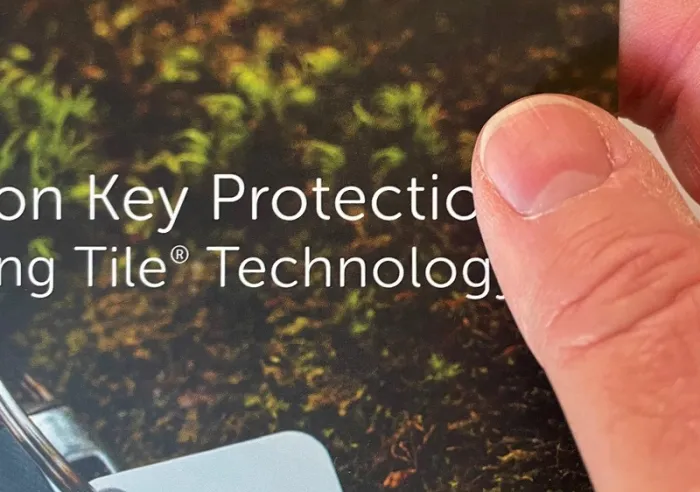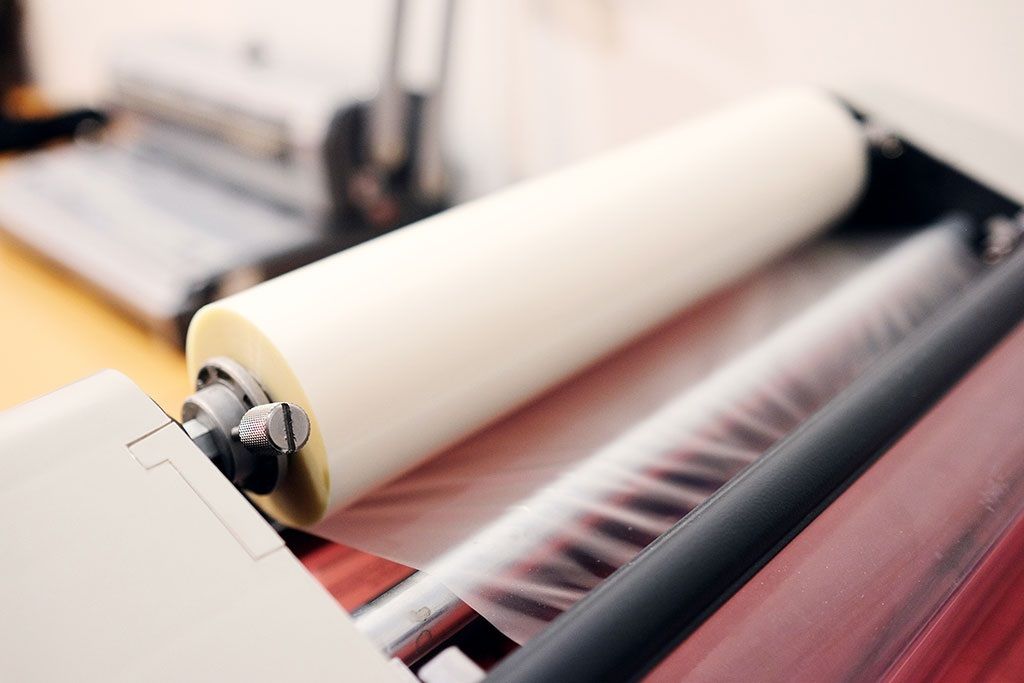Print Marketing: Exploring the Allure of a Soft Touch Finish

estimated reading time: 5 minutes
One big advantage that print marketing has over digital marketing
is that printing is real and tangible. Unlike pixels on a screen, ink on paper exists
in physical form. Hence, a printed piece can be held in one's hands, its texture can be felt, and it can be manipulated to view all
sides.
So printing not only appeals to our sense of sight, it also
appeals to our sense of touch. This is
why print marketing remains so popular in a world dominated by online communication. It provides a more
meaningful connection than its digital counterpart.
In today's competitive marketplace, the desire to further differentiate
printed marketing materials explains why the printing industry has seen a surge
in "soft touch" finishing. Soft touch has grown in popularity because it takes
the sensory experience to a whole new level. It captivates consumers in ways conventional
print marketing or digital marketing cannot.
This article will explain what a soft touch finish is, what
makes it so alluring, and the role it plays in enhancing consumer perception of
a brand.
What is a Soft Touch Finish?
In the printing industry, a Soft Touch Finish refers to a special
surface treatment used to enhance certain print projects. In addition to
softening the appearance of the underlying ink colors and adding a sense of depth,
a soft touch finish is able to do something quite sophisticated: appeal to the
sense of touch.
Unlike traditional gloss or matte coatings, a soft touch
finish adds a very pleasant texture to printed pieces, similar to the soft feel
of velvet or suede. By increasing the sensory level to include both touch and
sight, the distinctive and often unexpected sensation of a soft touch finish encourages
a deeper engagement with the printing.
How is a Soft Touch Finish applied?
A soft touch finish can be applied to printed pieces using
several techniques. A special liquid top coat can be applied to the printing,
such as an aqueous soft-touch coating or a UV soft-touch coating. As these liquid coatings dry, they develop a soft-touch feel. A soft-touch can also be
achieved by applying a plastic laminate film that has been specially textured
with a soft touch finish.
Below is a quick overview of the two soft touch coating
options as well as the laminate film option…
Soft Touch Aqueous Coating -
As its name implies, an aqueous soft touch coating is water based.
It is the most affordable method for attaining a soft touch finish. However, it
is not quite as durable as the UV coating or laminate options. So keep that in mind
if the printed pieces are intended to see frequent use.
Also, soft touch aqueous can only be applied to an entire
sheet as a flood coat. It cannot be applied as a spot coating.
Soft Touch UV Coating -
A soft touch UV coating is made from polymer resins, so it
is more durable than an aqueous soft touch coating. After being applied in liquid form, a soft
touch UV coating is exposed to Ultraviolet (UV) light for curing. The UV light
triggers a chemical reaction that instantly transforms the liquid polymer into
a solid, thus creating a durable coating.
A soft touch UV coating can be applied to an entire sheet as
a flood coat. It can also be applied as a spot finish to select areas on the
sheet.

Soft Touch Laminate -
A soft touch laminate is a translucent plastic film that is bonded to print materials. The surface of the laminate has a soft touch texture.
Of all the methods available for adding a soft touch finish to print
materials, the laminate film option offers the most durability.
Whether a soft touch finish is applied as an aqueous coating, UV coating or a laminate, its low-sheen finish looks best when applied over dull or matte coated stocks.
Also,
in addition to adding a premium look and feel, a soft touch finish helps to improve
the longevity of printed pieces by providing a layer of resistance to scuffs, fingerprints,
and general wear and tear.
The Allure of a Soft Touch Finish
It has long been known that humans have an affinity for soft
textures. Over the centuries, softness has come to be associated with luxury
and comfort (this probably explains why gloves and slippers are lined with fur
or fleece and not burlap).
Also, our sense of touch is strongly linked to emotions.
Things that feel soft often evoke positive feelings, such as calmness, relaxation,
and safety.
That said, most consumers expect a printed brochure, catalog,
postcard, or other printed item to have a plain, smooth surface…because that would
be considered the norm. So when they encounter print materials that have a soft
touch finish instead, it triggers a deeper sensory connection. A
connection that is likely to elicit positive feelings.
In turn, these positive feelings lead the consumer to a more favorable interaction with the company, product, or service being promoted. Attention is
heightened, features and benefits are explored more thoroughly, and a purchase
decision is more likely to be contemplated.
Because a soft touch finish is able to involve multiple
senses (sight and touch) and evoke positive feelings and emotions, consumers
find it extremely alluring. Whether this attraction occurs consciously or
subconsciously, the soft touch finish does an amazing job of steering a buying
decision in the right direction.

A Soft Touch Finish enhances Brand Perception
As we just discussed, the way something feels can
significantly impact consumer perception. Since a soft touch finish is quite distinctive,
it gives an impression of high quality. As a result, brands that incorporate a soft
touch finish into their print marketing are often perceived as being a premium
brand.
This perception of high value can make a product or service more
desirable, a key factor in determining how much consumers are willing to pay
for it. So by incorporating a soft touch finish, businesses can actually enhance
the perceived value of their products and services. This can increase consumer
satisfaction and enable the potential to command a higher price point.
Also, an interaction with soft touch is something a consumer
will remember...and a memorable experience reinforces brand recall. By
strategically incorporating a soft touch finish into your print marketing
strategy, especially for high impact marketing pieces like brochures, business
cards and presentation folders, you can elevate your brand and stand out from
the competition.
Want to learn more about the Benefits of Soft Touch?
A soft touch finish has the power to positively influence
consumer behavior. So if you would like to explore the benefits of
adding a soft touch finish to an upcoming print project, be sure to get in
touch with Color Vision Printing. We've been a producer of quality
printing since 1984 and our services are extremely affordable.
Just give us a call at 800-543-6299 to
discuss your project. Or, if you already know your specs, you can submit a
quick quote request by clicking here. As always, we look forward to
assisting with your printing and finishing needs!
Related Articles

7 Key Advantages Print Marketing has over Digital Marketing
Read This Article

Print Marketing: Exploring the Allure of a Soft Touch Finish
Read This Article

Custom Printed Notepads: Easy and Affordable Marketing Tools
Read This Article

Print Marketing: Maximize Engagement and Sales with QR Codes
Read This Article